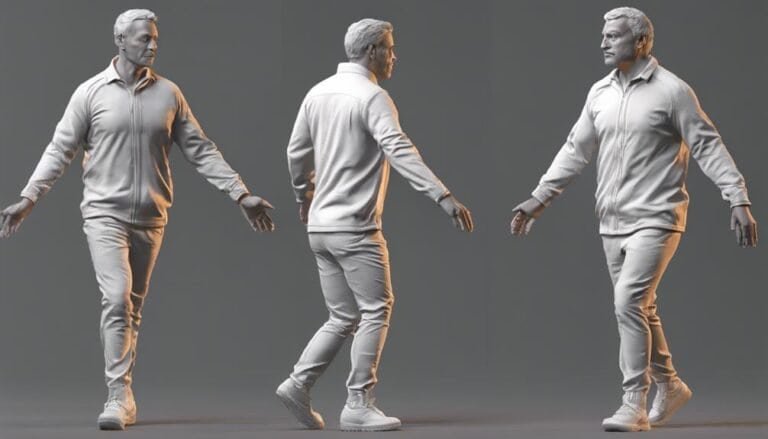5 Secrets to Understanding Any Personality in One Conversation
To understand any personality in one conversation, focus on active listening. Show genuine interest and mirror body language for rapport. Look for non-verbal cues like eye contact and gestures – they reveal hidden emotions. Ask meaningful questions to deepen connections and spark engaging discussions. Recognize different communication styles through tone and body language, adapting your approach accordingly. Be flexible in adjusting your tone and style to resonate better. These strategies will help you decode personalities effortlessly. Master them to engage authentically with others and uncover deeper insights into their character.
Key Takeaways
- Practice active listening to understand personality traits better.
- Pay attention to non-verbal cues like body language and facial expressions.
- Ask thoughtful questions to delve deeper into someone's character.
- Identify different communication styles through verbal and non-verbal cues.
- Adapt your approach by mirroring, adjusting tone, and being flexible to connect effectively.
The Power of Active Listening
To truly understand someone's personality in a conversation, active listening serves as a powerful tool that allows you to engage fully and empathetically with the speaker. Empathetic responses play an essential role in active listening. By showing empathy, you demonstrate that you're genuinely interested in the speaker's thoughts and feelings. This can create a deeper connection and encourage the speaker to open up more, providing you with valuable insights into their personality.
Another vital aspect of active listening is mirroring body language. When you mirror the speaker's body language, such as leaning in when they lean in or nodding when they nod, you establish rapport and show that you're attuned to their non-verbal cues. This can help build trust and make the speaker feel more comfortable sharing their thoughts with you.
Observing Non-Verbal Cues
By closely observing the speaker's non-verbal cues during a conversation, you can gain valuable insights into their thoughts and emotions. Body language and facial expressions often reveal more than words alone. When someone maintains eye contact and nods along with your words, it signifies interest and engagement. Conversely, crossed arms or a furrowed brow might indicate disagreement or discomfort.
Facial expressions are windows to the soul. A smile can convey warmth and friendliness, while a frown might signal concern or disapproval. Raised eyebrows can indicate surprise, while a clenched jaw could suggest tension or frustration. These subtle cues offer a deeper understanding of the speaker's underlying emotions and attitudes.
Pay attention to how the speaker's body language aligns with their words. If someone says they're excited about a topic but their arms are crossed and their posture is closed off, there may be underlying reservations. Being attuned to these non-verbal signals allows you to adapt your communication style and show empathy towards the speaker's unspoken feelings.
Asking Thoughtful Questions
When engaging in conversations, the art of asking thoughtful questions can lead to deeper connections and a better understanding of the speaker's perspective. By posing thought-provoking inquiries, you open up avenues for meaningful dialogue that can reveal layers of someone's personality. Asking questions that explore beyond surface-level topics shows that you're genuinely interested in what the other person has to say. It allows the speaker to express their thoughts, emotions, and experiences more freely, creating a space for authentic communication.
To ask thoughtful questions, consider the context of the conversation and the person you're speaking with. Tailoring your inquiries to their interests or experiences can lead to more engaging discussions. Additionally, being attentive to their responses can help you formulate follow-up questions that build upon the initial conversation. Remember, the goal isn't just to ask questions for the sake of it but to foster a deeper connection and gain insight into the other person's perspective.
Identifying Communication Styles
Understanding different communication styles amongst individuals is essential for fostering effective and empathetic interactions. People have unique communication preferences that can greatly impact how they express themselves and interpret information. By paying attention to verbal cues, tone of voice, and body language, you can gain valuable insights into someone's communication style.
Some individuals may prefer direct and concise communication, while others might appreciate more detailed and elaborate explanations. Observing body language cues, such as eye contact, gestures, and posture, can also provide clues about how comfortable someone is in a conversation. For example, a person who avoids eye contact may be feeling shy or reserved, while someone who leans in and nods frequently may be more engaged and enthusiastic.
Adapting Your Approach
To effectively adapt your approach when interacting with individuals of different communication styles, it's important to be observant and flexible in your interactions. Flexible communication involves adjusting your tone, pace, and style to match the preferences of the person you're engaging with. By being attentive to verbal and nonverbal cues, you can tailor your communication to resonate better with the other person. Personalized interactions create a deeper connection and show that you value and respect the individuality of the other person.
When adapting your approach, consider mirroring the other person's communication style to establish rapport. If they prefer a direct and concise communication style, mirror that by getting straight to the point. On the other hand, if they appreciate a more detailed and expressive approach, take the time to provide additional information and engage in a more elaborate conversation.
Conclusion
As you engage in conversation with others, remember the power of active listening, observing non-verbal cues, asking thoughtful questions, identifying communication styles, and adapting your approach. By mastering these secrets, you can reveal the hidden depths of any personality in just one conversation.
Through understanding and empathy, you can navigate the complexities of human interaction with ease and insight, creating meaningful connections and fostering mutual understanding. In a world full of noise, be the one who truly listens and understands.








